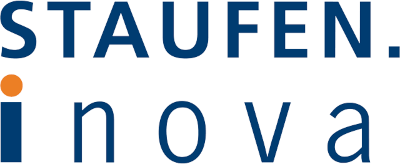
In many companies, key elements of value creation processes have already been digitalized. Nevertheless, digital transformation itself has only just begun. To remain competitive, companies urgently need to accelerate their digital transformation.
An interview with Frank Krüger, Senior Partner at Staufen AG.

Frank Krüger has many years of professional and management experience. As an expert in transformation processes in mechanical engineering as well as in the computer and supplier industry, he has led many international projects. At Staufen AG, he and his team are driving digitalization topics such as process mining, EMS, RPA, ERP and digital Shop Floor Management.
Frank, what should a company focus on to avoid getting bogged down in digitalization?
At its core, it is always about process excellence, i.e., how processes can be continuously optimized. Today, digitalization offers methods and opportunities to view processes more holistically, i.e., as end-to-end processes, for example, to structure order processing as a comprehensive and consistent order-to-cash process.
Digitalization helps me prevent typical individual considerations; instead, I can take a closer look at the totality of all data including its dependencies and system breaks. This makes analyses more valuable in the overall context and solution approaches more realistic and meaningful, since they take into account all influencing variables in the correct relations.
Interesting. Can you explain how this method works?
I need only three elements for this: first, a timestamp, i.e., a date or time; second, a transaction code, for example a material or invoice release; and third, identification of the object on which this transaction acts, for example a material or order number.
With these three pieces of information, data models can be built, which I can then use to take a very close look at the actual process. This is an incredible advancement in the analysis process.

What does the customer get out of it? What do you do with the results?
For the first time, you get a picture of the actual processes in the company, of the diversity and variance of the process landscape. You get a picture of how processes actually run and a comparison of how they should actually run. The difference is often large. The deviations quickly reach six-digit figures.
How long does this type of process optimization take?
The implementation phase is short. Maximum three months. The key point is the approval processes and access to the data. Most companies have high security requirements and many restrictions in data handling.
This is an incredible advancement in the analysis process.
Frank Krüger, Senior Partner at Staufen AG

Why better consulting needs technology – a conversation with Celonis
To transform a company successfully, you must trace all of its processes, discover the problems and eliminate them. Celonis SE of Munich, the market leader in this area, offers the opportunity to do this and provides practical solutions that can be implemented. Bastian Nominacher, Co-Founder and CEO of Celonis, speaks to Janice Köser of Staufen AG about the company’s work.
Read more
Digitalization and Industry 4.0
Virtually all companies are now dealing with the topic of digitalization. It has been becoming increasingly important for years, and those who want to keep pace are focusing on it. Frank Krüger, Senior Partner at Staufen AG and Head of the Processes and Digitalization Unit, talks about the connection between operational excellence and digitalization.
Read more


